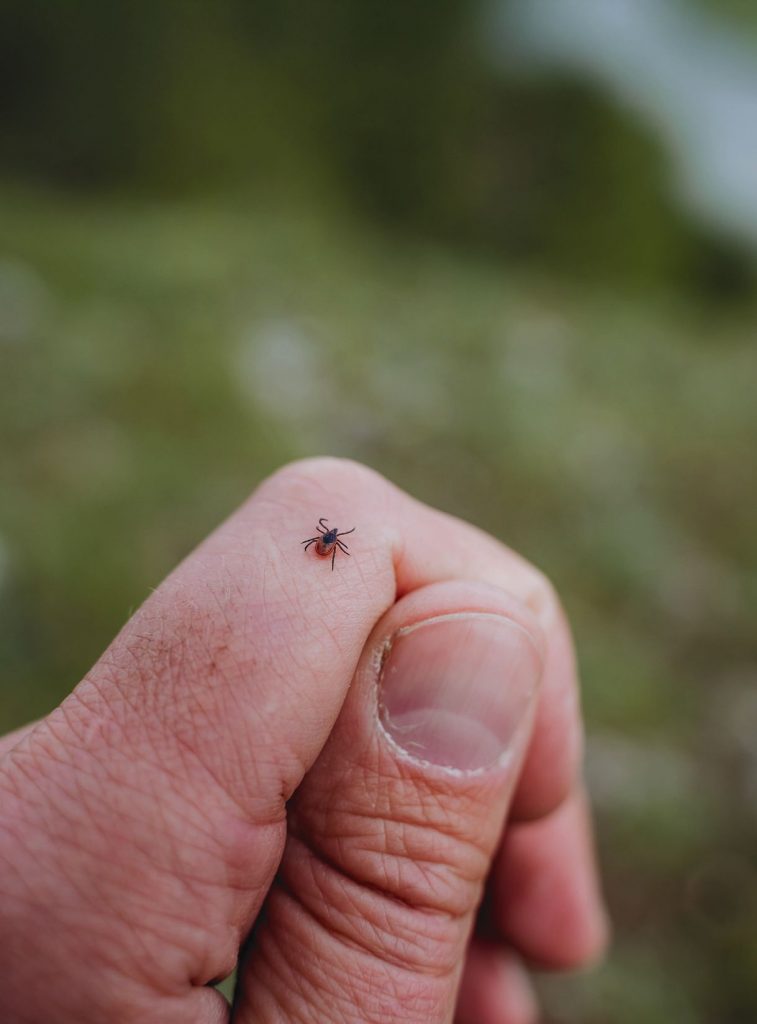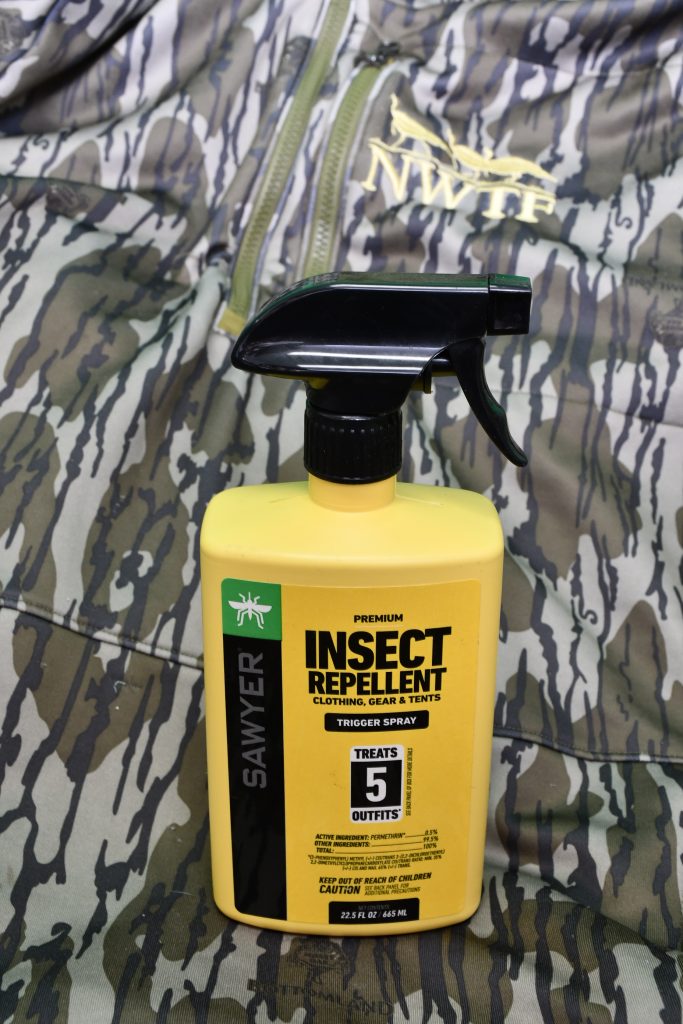The Fight Against Ticks
As the range of black-legged ticks expands and the number of Lyme disease cases explodes, protecting against the tiny arachnids is becoming a health safety matter for turkey hunters.

For years, many hunters in tick country sprayed their clothing with permethrin to ward off ticks, and Elimi-Tick was the only option in permethrin-treated clothing. Now, a growing number of companies are offering clothing with permethrin treatment embedded in the cloth. Recently, new offerings were launched from Final Approach, Bass Pro Shops/Cabela’s and Sitka.
Karl Miller, emeritus professor of deer management at the University of Georgia, was a biological consultant for developing Sitka’s Insect Guard line of clothing for turkey hunters. He believes the expansion of ticks is driving the product launch. In 2019, the Center for Disease Control reported 50,000 cases of Lyme disease per year.
“That number is very much an underestimate, and that number may be as high as half a million per year,” Miller said.

If Miller is correct, 500,000 cases per year would put the prevalence of Lyme at a higher rate than breast cancer, which is the most common cancer at 313,000 cases per year. And to top it off, Lyme isn’t the only tick-borne disease.
Miller referred to a couple of other statistics, saying the range of the black-legged tick doubled in the last 20 years. The number of counties with a high risk of Lyme disease has increased 300% since the 1990s. Providing a personal example, Miller grew up in northern Pennsylvania and rarely saw a tick in the late 1960s and early 1970s. That is a drastic change compared with today, with Pennsylvania being considered a high-incidence state with its 64.9 cases per 100,000 people, according to the Pennsylvania Medical Society. Despite increasing risk to hunters, Miller hasn’t seen tick-bite prevention education growing proportionately.
“We do all the background work that makes hunting a safe sport but do a terrible job teaching about tick-borne disease,” Miller said.
Lyme is by far the most common tick-borne disease. However, in the last two decades, seven new tick-borne diseases have been identified, bringing the total number of diseases that ticks can carry to 16. Rocky Mountain spotted fever, which can result in the amputation of limbs, is one of the other better-known ones.
Miller believes that clothing with permethrin embedded is a step up from spraying clothes with liquid permethrin, which must be reapplied after four to six weeks or six wash cycles. In contrast, treated clothing can last up to the expected lifespan of the clothing.

What is Permethrin?
Permethrin is a synthetic pyrethroid.
“They work by altering nerve function, which causes paralysis in target insect pests, eventually resulting in death,” said Jeff Landis, with the Environmental Protection Agency Office of Media Relations and Risk Communications.
Stepping back in permethrin development, pyrethrin, a botanical insecticide derived from chrysanthemums found in Australia and Africa, was discovered first. Pyrethrin was common in World War II to fight off mosquitoes carrying diseases such as malaria and yellow fever. Permethrin is designed to be more potent and last longer. The World Health Organization has included it on its list of essential medicines.
The Use of Permethrin
In 1990, 11 years after its first registration, the military received approval for permethrin use on clothing from the EPA. Around the same time, the consumer use of permethrin spray on clothing and gear was also approved. Approval of factory-treated clothing with permethrin for the general public followed in 2003. Landis explained that companies looking to register treated clothing must follow a process.
“The process for registering a pesticide is a scientific, legal and administrative procedure in which the EPA assesses a wide variety of potential human health and environmental effects associated with use of the product,” he said. “This procedure is robust, requiring a large amount of independently reviewed data.”
In hunting clothing, Elimi-Tick was the longstanding option for hunters wanting factory-treated clothing until the more recent launch of permethrin-embedded clothing by Bass Pro Shops and Cabela’s, Sitka and Final Approach.
Mario Friendy, vice president of brand innovation, marketing and sales for Final Approach, said the increase in tick populations and Lyme Disease occurrence has been responsible for the growth in the number of pre-treated clothing options. And he stressed that it is effective.
“We have watched ticks climb on the pants and literally fall off,” Friendy said.
He explained the bonding agent used to adhere the permethrin to the fabric during the clothes manufacturing process helps ensure that they can withstand up to 100 washes.
How Safe Is Treated Clothing
The growing popularity of a product that repels ticks on contacts may raise some safety concerns. For instance, should a hunter who has touched pre-treated pants or a shirt, or is wearing pre-treated gloves, then touch a diaphragm call that is put in the mouth?
Asked this question, Landis said part of a registration review looked at various situations with exposure to permethrin, including children mouthing the treated clothing and exposure levels with military personnel who wear permethrin-treated clothing daily.
“All exposure scenarios evaluated showed that permethrin factory-treated clothing is unlikely to pose any risks of concern to people mouthing the clothing,” he said.
“We have seen nothing that tells us wearers should be cautious after touching the clothing,” Friendy added, emphasizing it is embedded in the clothing.
EPA studies concluded that “human exposure resulting from wearing permethrin factory-treated clothing also is low.” The agency did, however, note that permethrin is likely to cause cancer if it is swallowed.
On the insect-fighting front, the bonus is permethrin will assist in keeping mosquitoes from biting.
“It’s not like you’re wearing a Thermacell. They have to land on the material not to like it,” Friendy said.
As hunters, we are in a battle against ticks, and a battle to keep our health. Permethrin-treated clothing is just one tool in the fight.
“I wouldn’t put all my eggs in one basket either,” Miller said. “I would still check yourself, check your clothes when you get home, put your clothes in the dryer. Self-inspection is still important.”